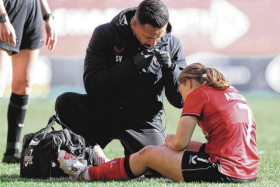Hard truths about running on different surfaces
Running is one of the most straightforward forms of exercise.
But it is a relatively high impact sport that may cause joint, knee, tendon and other injuries.
Most of us believe that running on a softer surface is better - to reduce the impact of constantly striking the ground - but that may not always be the best solution.
What affects the impact on your legs?
When you run, your muscles and tendons work like a spring. On impact, they absorb the shock and release the stored energy later.
The ability of your legs to absorb shock is known as leg stiffness, and it is regulated by your body based on the hardness of the surface and speed you are running at. The lower the leg stiffness, the lower the force of impact on your joints.
According to Dr Lim Kay Kiat, an orthopaedic surgeon at Mount Elizabeth Novena Hospital, leg stiffness is reduced when running on hard surfaces and increases on soft, compliant surfaces. So the impact on your joints will remain relatively constant no matter what surface you are running on.
Here are Dr Lim's tips on choosing the best running surfaces.
ROAD
The roads you have been running on could be doing damage to your legs. To facilitate the drainage of water, the middle of the road is usually slightly higher than the side of the road. While it is not obvious to you, one of your feet will always be landing on a higher level than the other. This can potentially lead to muscle imbalances. If you want to run on the road, Dr Lim recommends running an out-and-back run on the same side of the road to balance out the demands on your body.
TREADMILL
When you are running on the treadmill, every step you take is identical to the next. This potentially increases your risk of injuries such as Iliotibial Band Syndrome and plantar fasciitis due to repetitive motion. Furthermore, according to a study by researchers from East Carolina University in the US, treadmill running results in greater Achilles tendon impact when compared to running outdoors. So it may not be a good idea to run on a treadmill if you are prone to Achilles tendon injuries.
TRAIL
Running on a trail mitigates the issues of repetitive motion, but it poses other dangers, including ankle sprains and falls due to the uneven terrain. Trail running will be suitable for individuals who suffer from muscle and joint injuries as it will help strengthen different muscle groups and improve balance.
CONCRETE
Contrary to popular belief, running on concrete does not make you more liable to impact-related injuries. According to Dr Lim, people with tendon injuries, especially of the Achilles tendon, are encouraged to run on flat, regular surfaces such as concrete.
VERDICT
There is no clear winner. Choosing a surface to run on is highly dependent on whether you have or are more prone to certain injuries. It is a good idea to run on a mixture of terrains and surfaces to stay away from injury, says Dr Lim.
This article first appeared in Shape (www.shape.com.sg).
Get The New Paper on your phone with the free TNP app. Download from the Apple App Store or Google Play Store now



